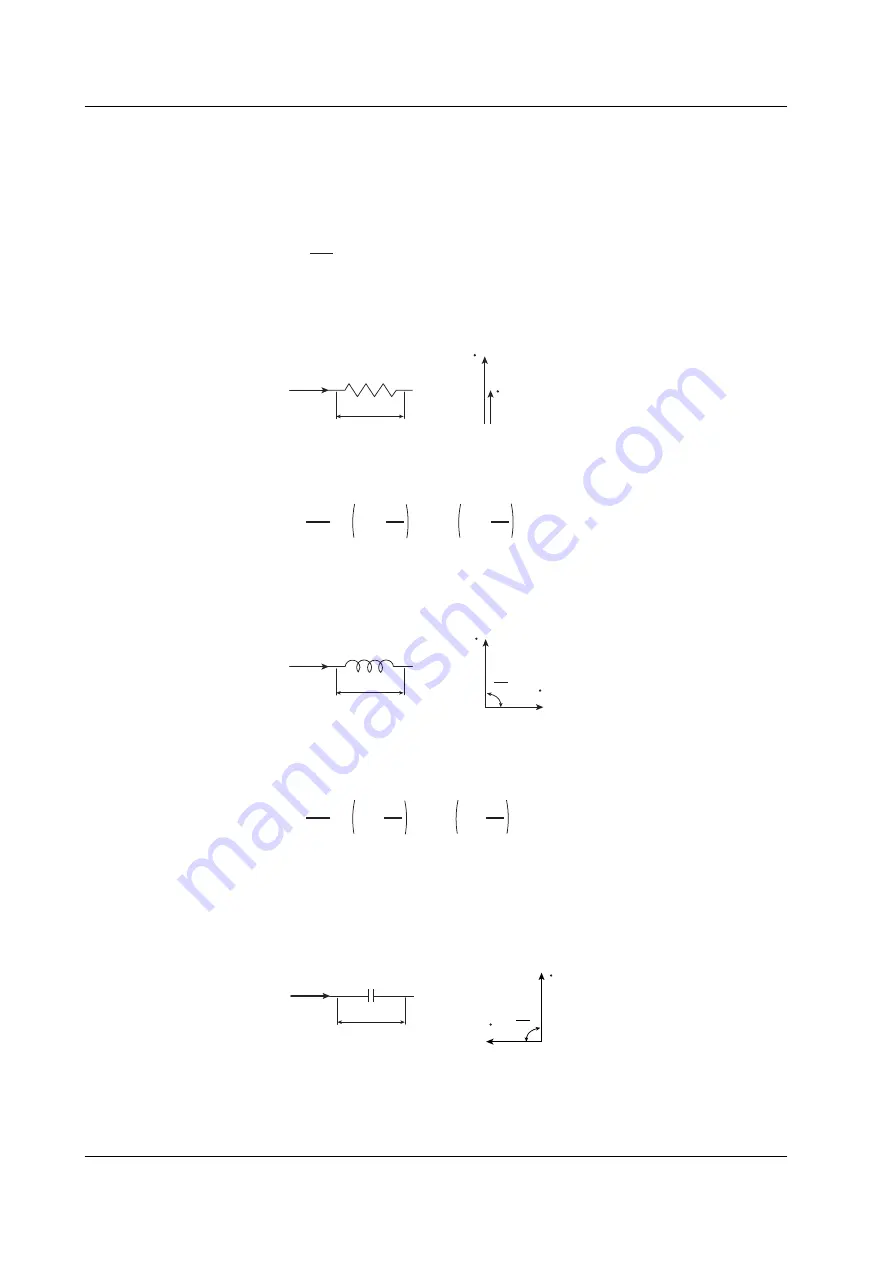
App-32
IM 253710-01E
Appendix 7 Power Basics (Power/Harmonics/Three Constants Related to the AC Circuit)
Three Constants Related to the AC Circuit
Resistance
Current i when the instantaneous value of u = U
m
sin
ω
t of AC voltage is applied to load
resister R[
Ω
] is expressed by the following equation. I
m
denotes the maximum value
of the current.
i =
U
m
R
sin
ω
t = I
m
sin
ω
t
If expressed in terms of the rms value, the equation becomes I = U / R.
The current flowing through a resistive circuit has no phase difference with respect to
the voltage.
R
I
U
U
I
Inductance
Current i when the instantaneous value of u = U
m
sin
ω
t of AC voltage is applied to the
load inductance L[H] is expressed by the following equation.
i =
U
m
X
L
sin
ω
t –
sin
ω
t –
π
2
= I
m
π
2
If expressed in terms of the rms value, the equation becomes I = U / X
L
where X
L
=
ω
L. X
L
is called inductive reactance and its unit is
Ω
.
Inductance has the effect of inhibiting the current from changing, and consequently
the current phase lags that of the voltage.
L
I
U
U
I
π
2
Static capacitance
Current i when the instantaneous value of u = U
m
sin
ω
t of AC voltage is applied to the
load capacitance C[F] is expressed by the following equation.
i =
U
m
X
C
sin
ω
t +
sin
ω
t +
π
2
= I
m
π
2
If expressed in terms of the rms value, the equation becomes I = U / X
C
, where X
C
= 1
/
ω
C. X
C
is called capacitive reactance and its unit is
Ω
.
When the polarity of the voltage changes, the maximum charge current that has the
same polarity as the voltage flows through the capacitor. When the voltage
decreases, discharge current that has the opposite polarity as the voltage flows
through the capacitor. Thus, the current phase advances with respect to the voltage.
C
I
U
U
I
π
2






































